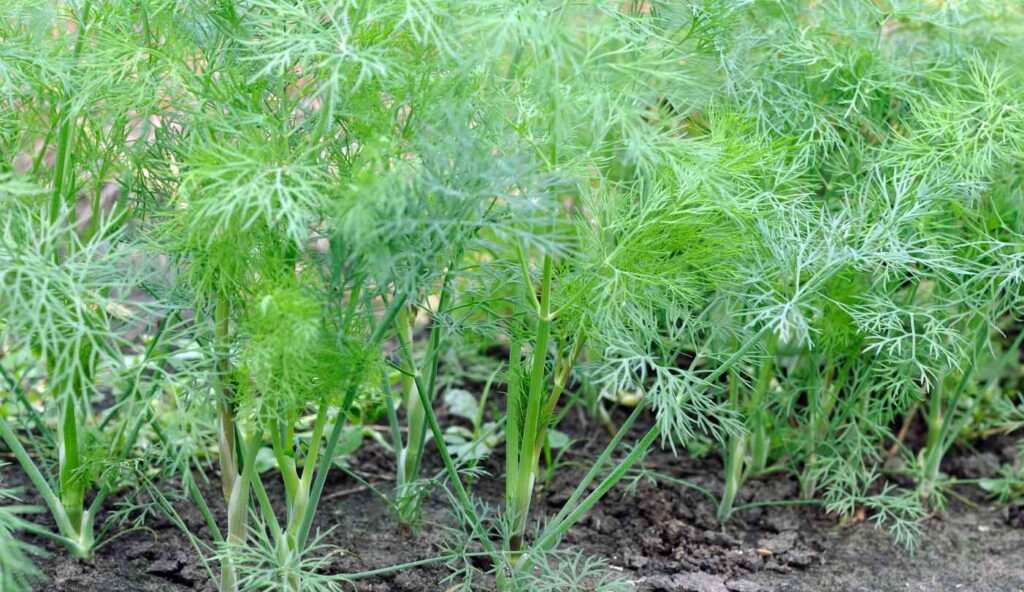
Description
Anethum graveolens, often known as dill, is a herbaceous annual plant in the Apiaceae family that is cultivated for its herbaceous leaves. Dill is an upright-growing, very fragrant herb. It has branching stems and tiny, pliable, fiber-like leaves that are blue-green in color and grouped in an open cone.
Habitat
Originally from southwest Asia, it has naturalized throughout much of northern Europe and the United States. Dill thrives in full sun, well-drained soil, and sufficient moisture. It might flower swiftly after a protracted dry spell.
Uses
Dill is rich in iron, calcium, riboflavin, vitamin D, and other vitamins and minerals that promote bone growth and regeneration. Immune system: Dill’s antioxidants are linked to enhanced immune performance, partly through shielding body cells from the damaging effects of free radicals.

Varieties
These are a few common dill cultivars, some of which are dwarf variants ideal for container planting.
“Dukat” is a common variety that is well-known for having a lot of leaves.
A dwarf variety (less than 18 inches), “Fernleaf” is perfect for pots.
“Long Island Mammoth“: This cultivar is most frequently planted for commercial purposes and is useful for gathering leaves and seeds.
‘Mammoth’: This plant is particularly tall (36 inches or more), with visually appealing, finely cut leaves.
Plant Care
- Light
Dill should be planted in a garden spot that receives six to eight hours of direct sunlight per day. A little afternoon shade is welcome and great in the summer if you live in a particularly hot region.
- Soil
Rich, loose, well-draining soil is ideal for dill plants. Although dill does not care much about the pH of its soil, it does best in slightly acidic soil. Remember that compacted soil may be an issue for dill plants since they have taproots, which are core dominating roots from which smaller roots sprout. Dill may self-sow, so make sure you plant it somewhere you can either pick it before it goes to seed or allow it to move freely.
- Water
Make sure the soil around your dill plant is regularly moist but not drenched. Never let the soil get fully dry in between watering since this can lead to an early bolting of the plant to seed.
- Humidity and Temperature
Dill plants can withstand lows of up to 25 degrees Fahrenheit since they are incredibly robust. Nevertheless, the ideal soil temperature for your dill plant is around 70 degrees Fahrenheit, which occurs in late spring and summer in the majority of USDA hardiness zones. Dill doesn’t need a specific humidity level.
- Fertilizer
Like other herbs, dill doesn’t require a lot of food. You shouldn’t need to apply any more fertilizer to your dill if the soil in your garden is high in organic matter. More aromatic plants will arise from somewhat lean soil.
Table





